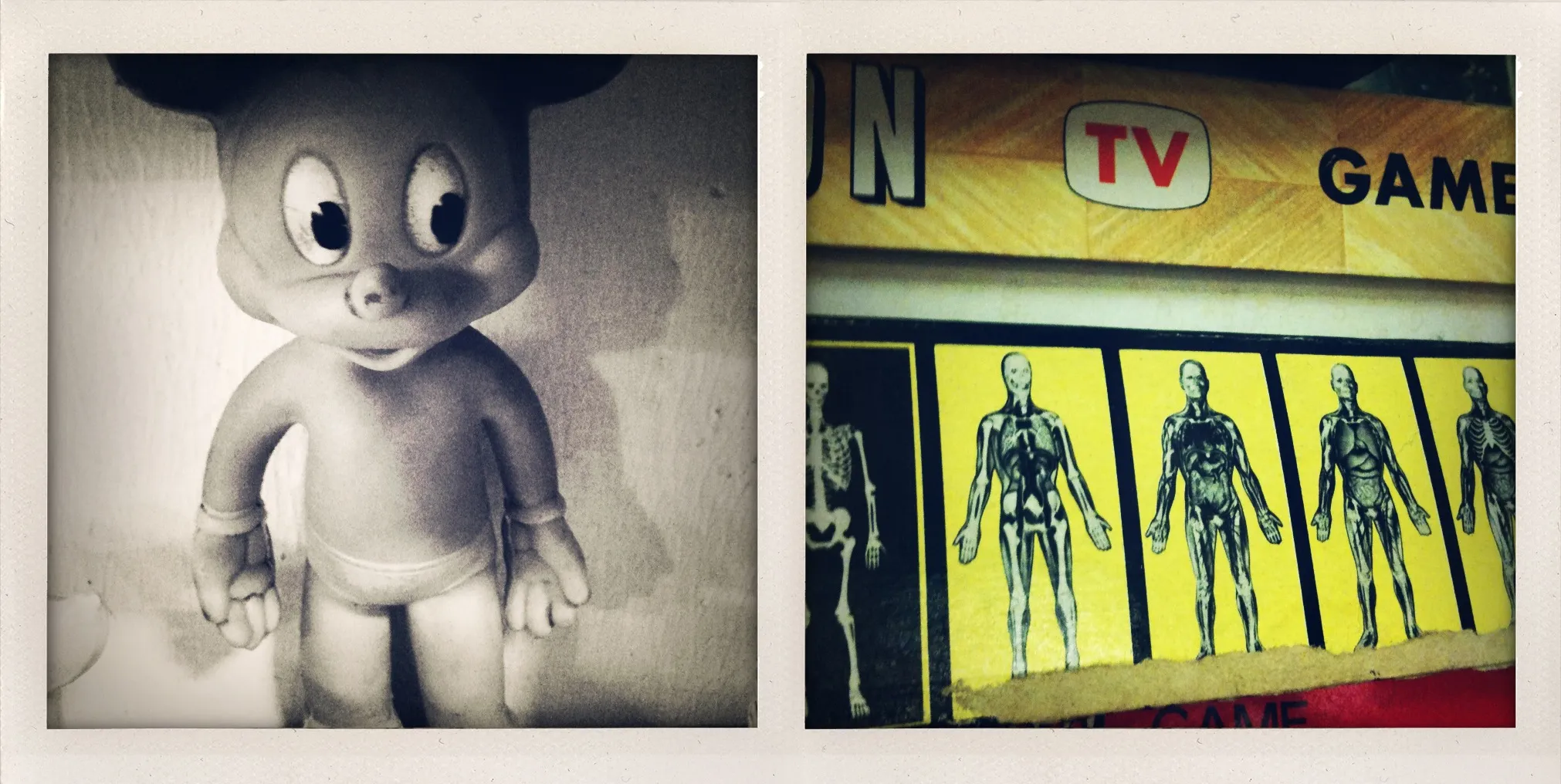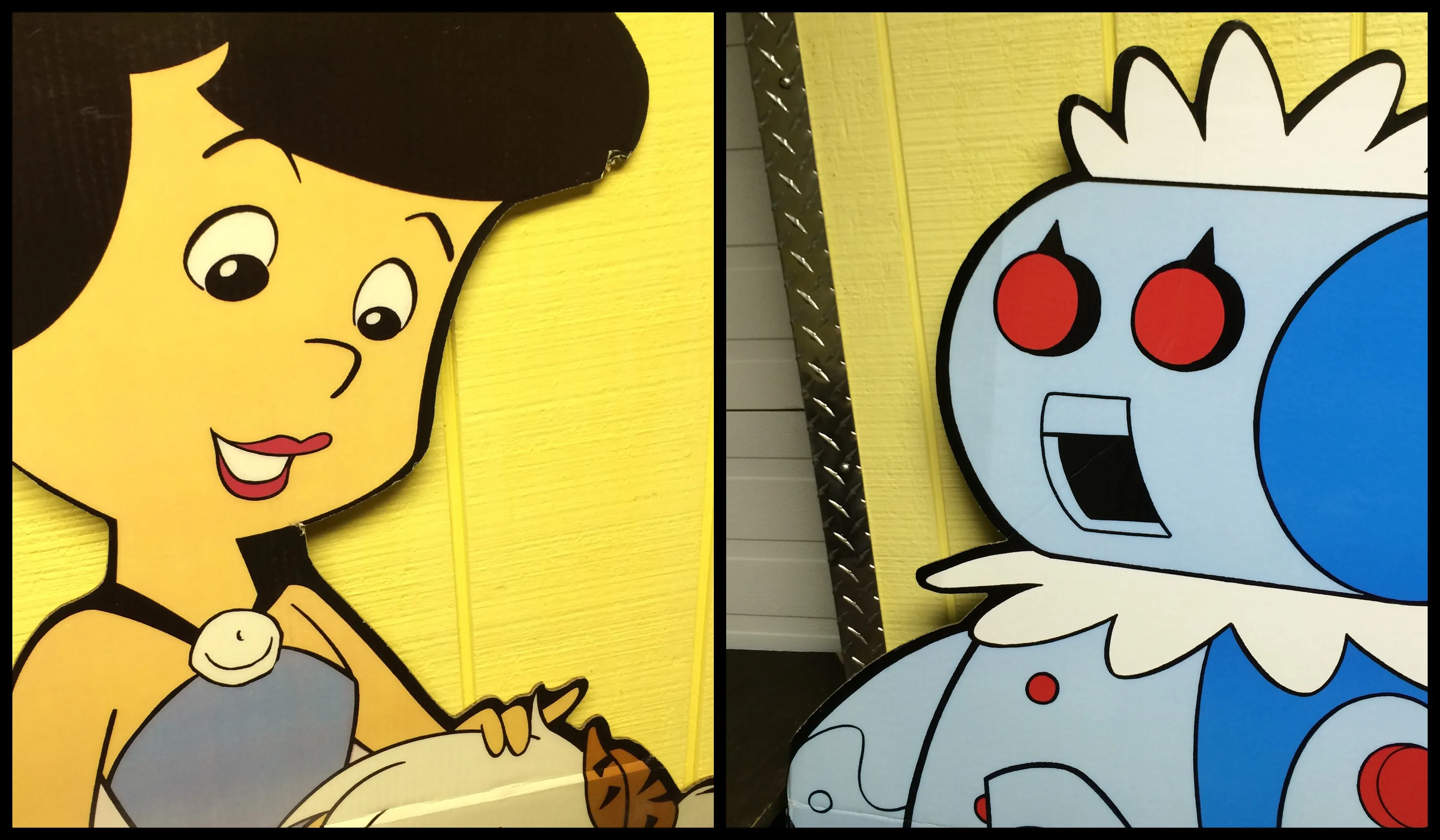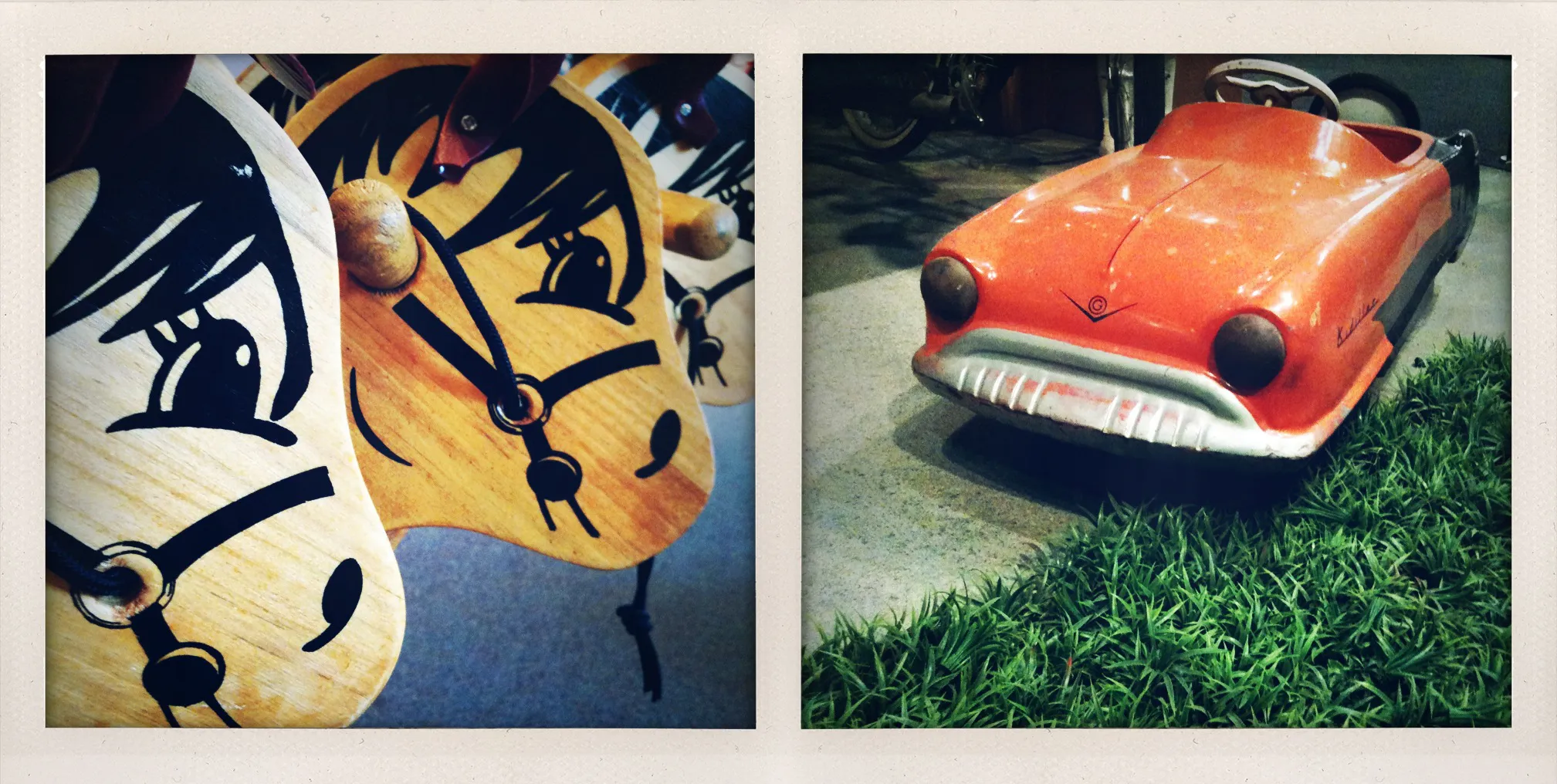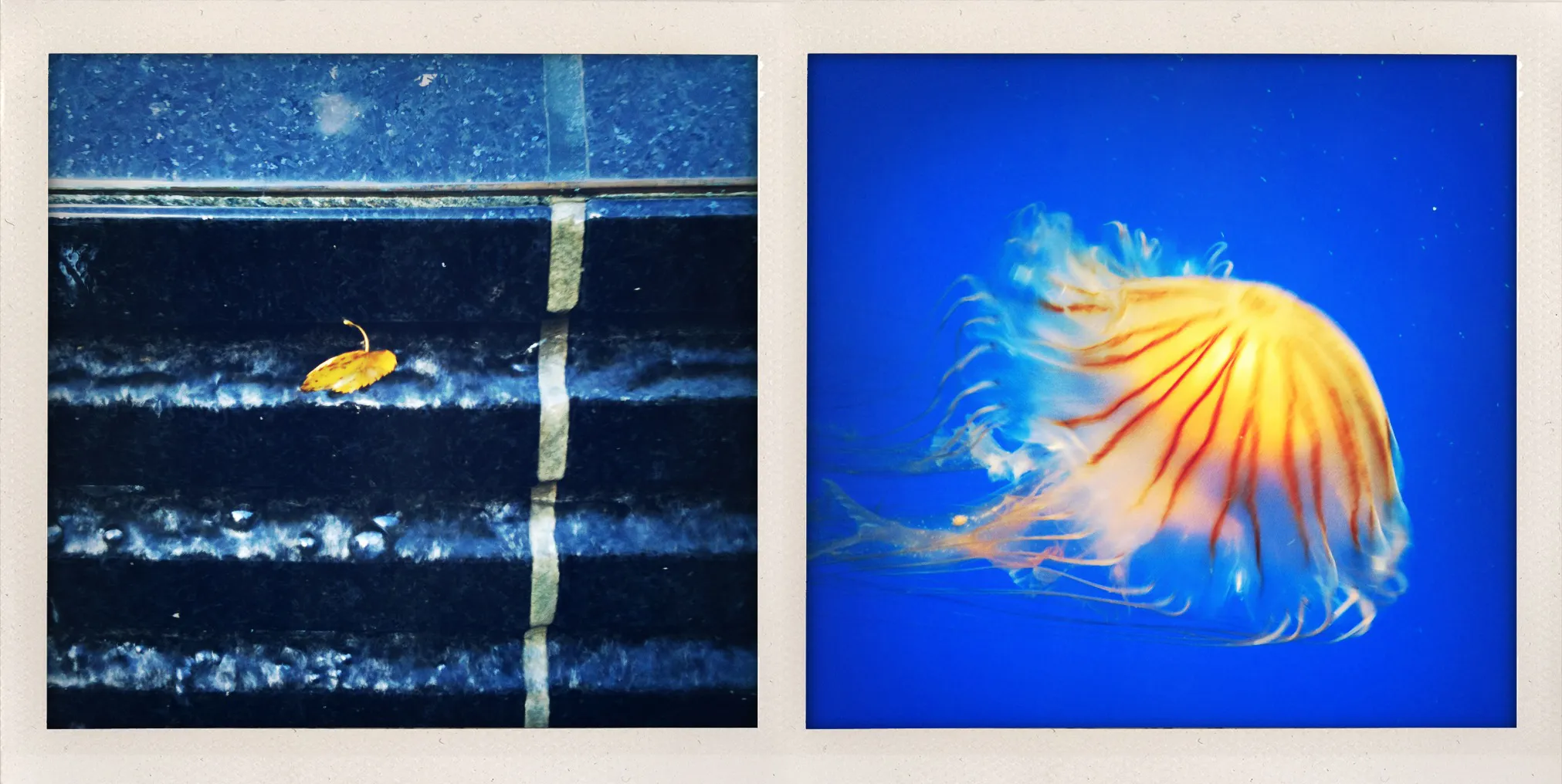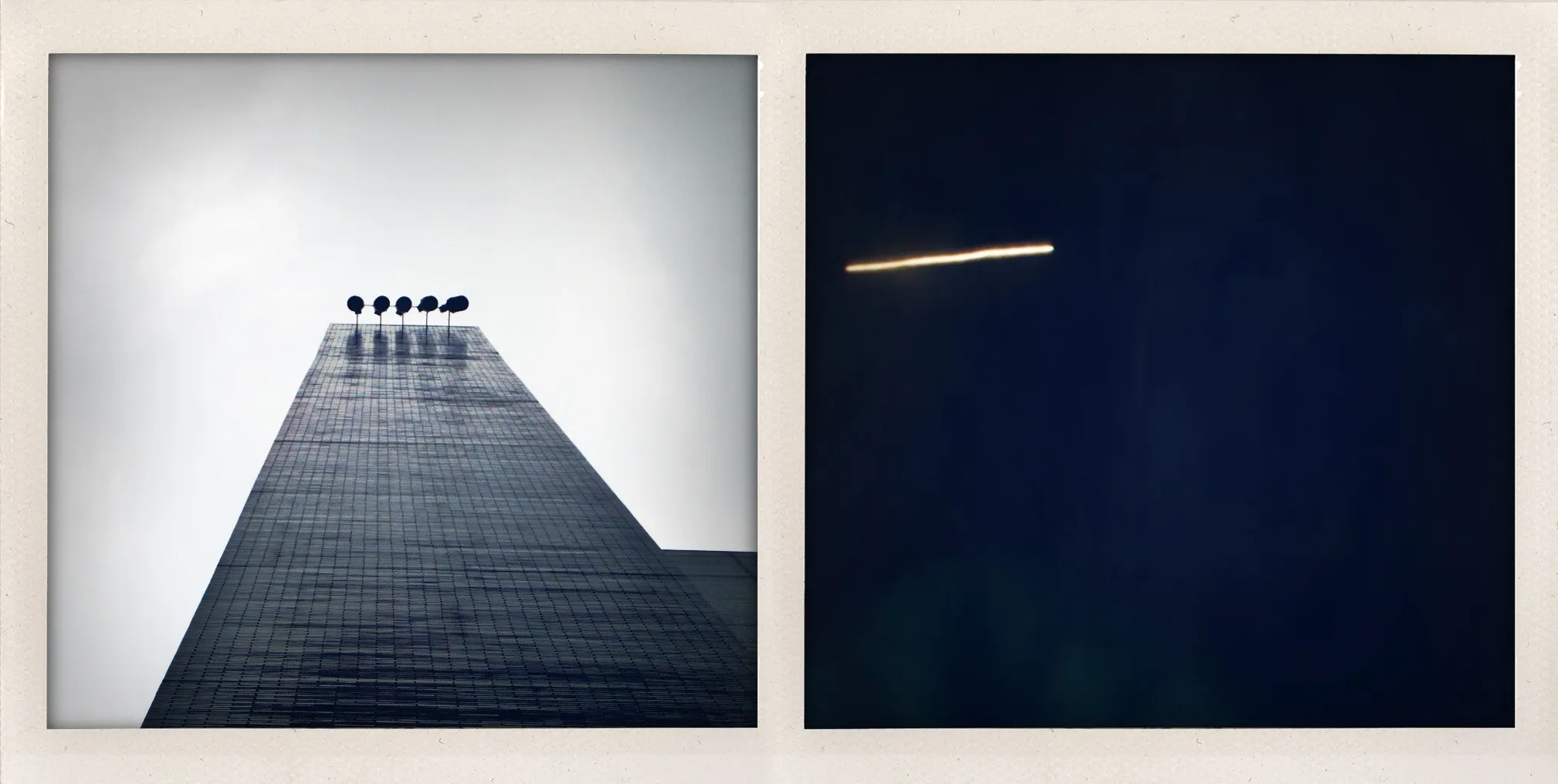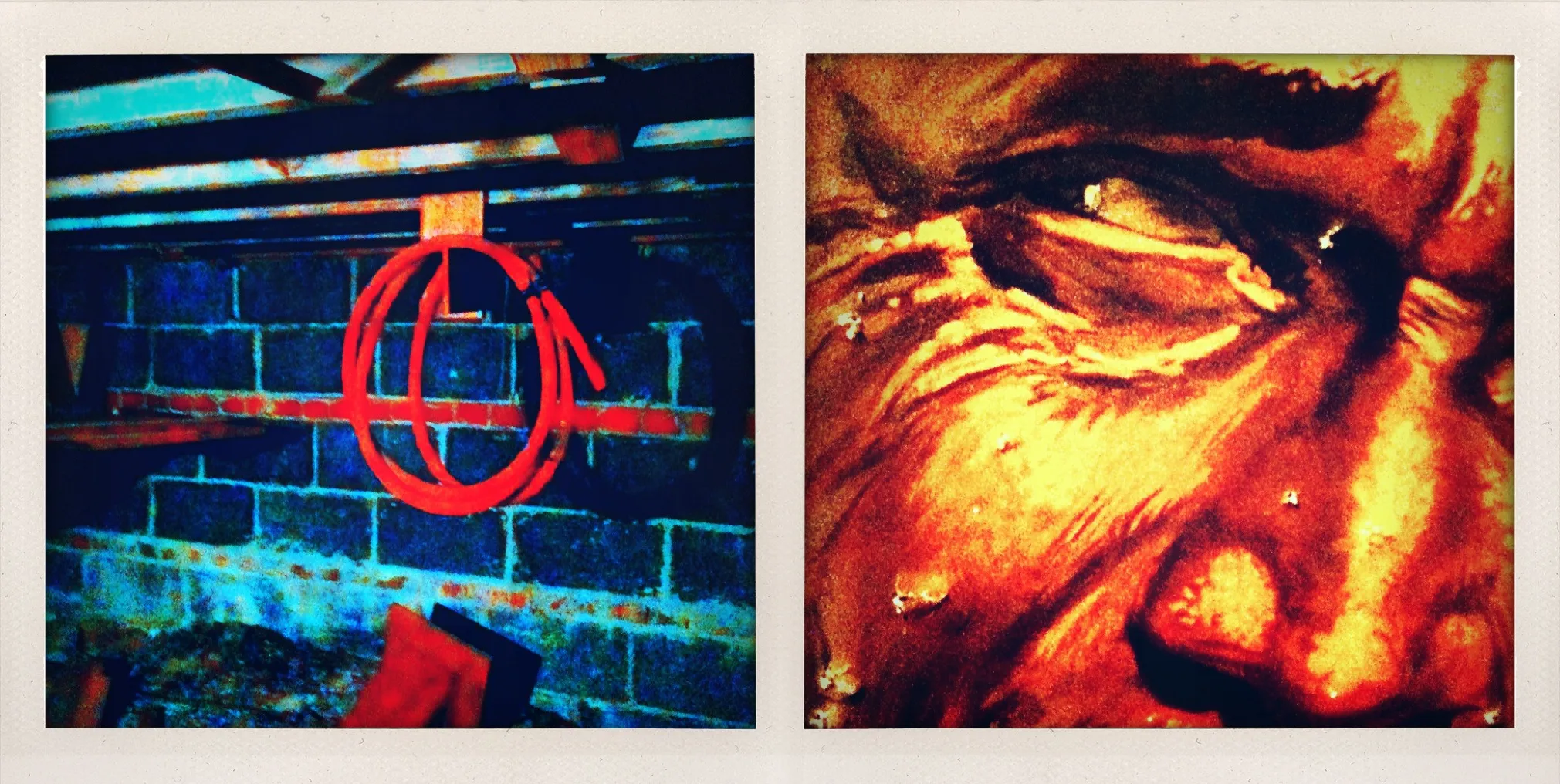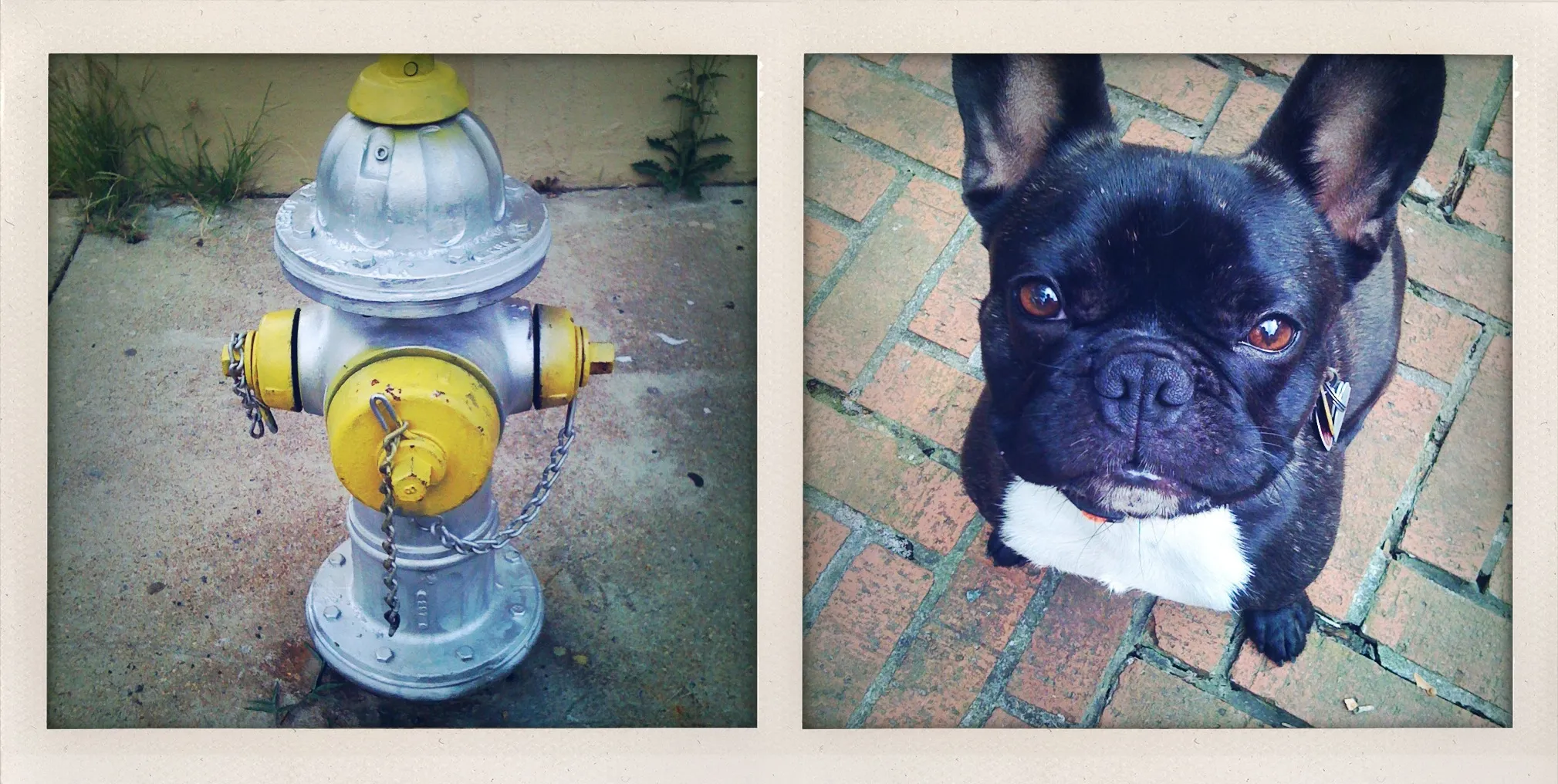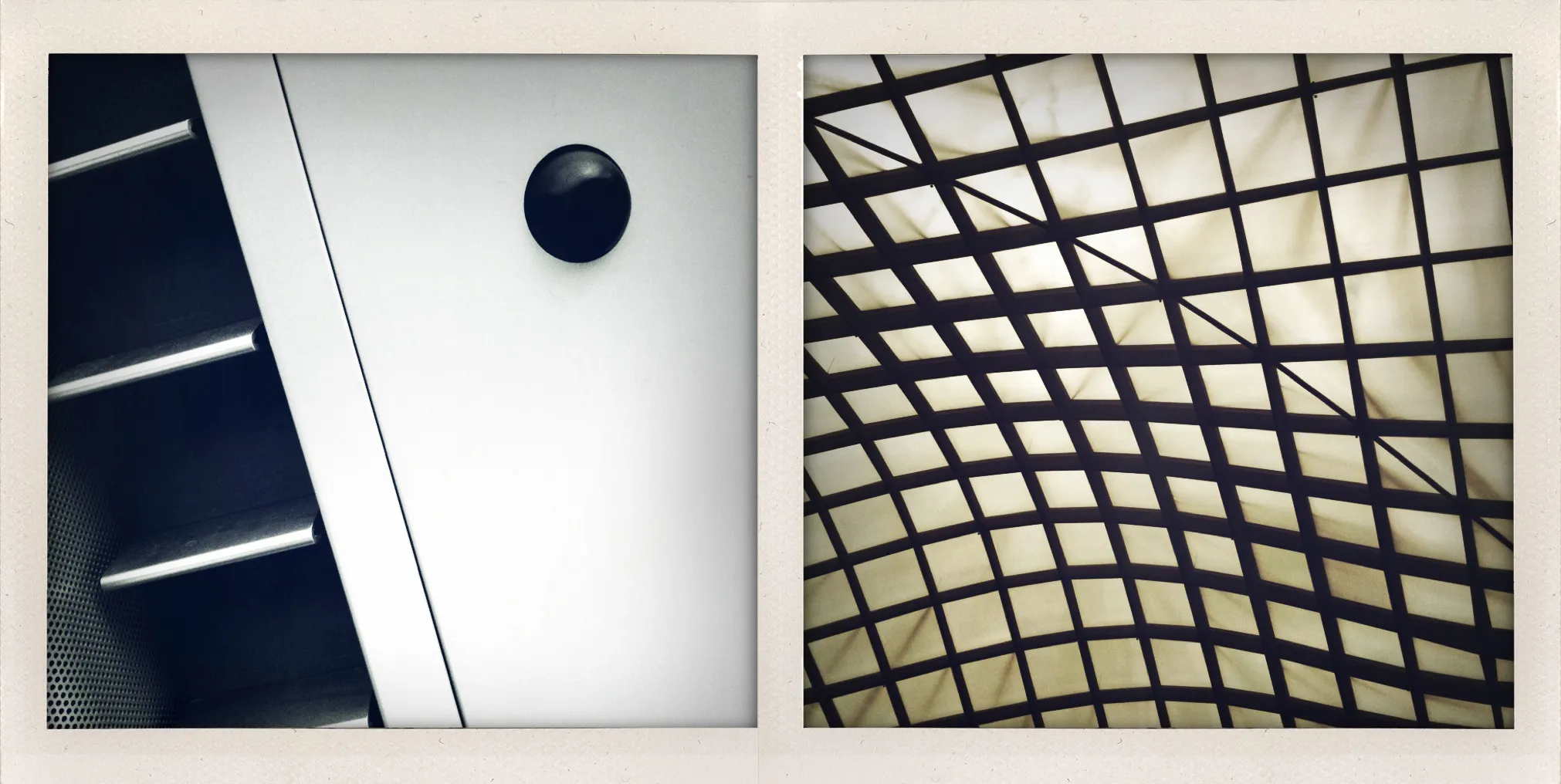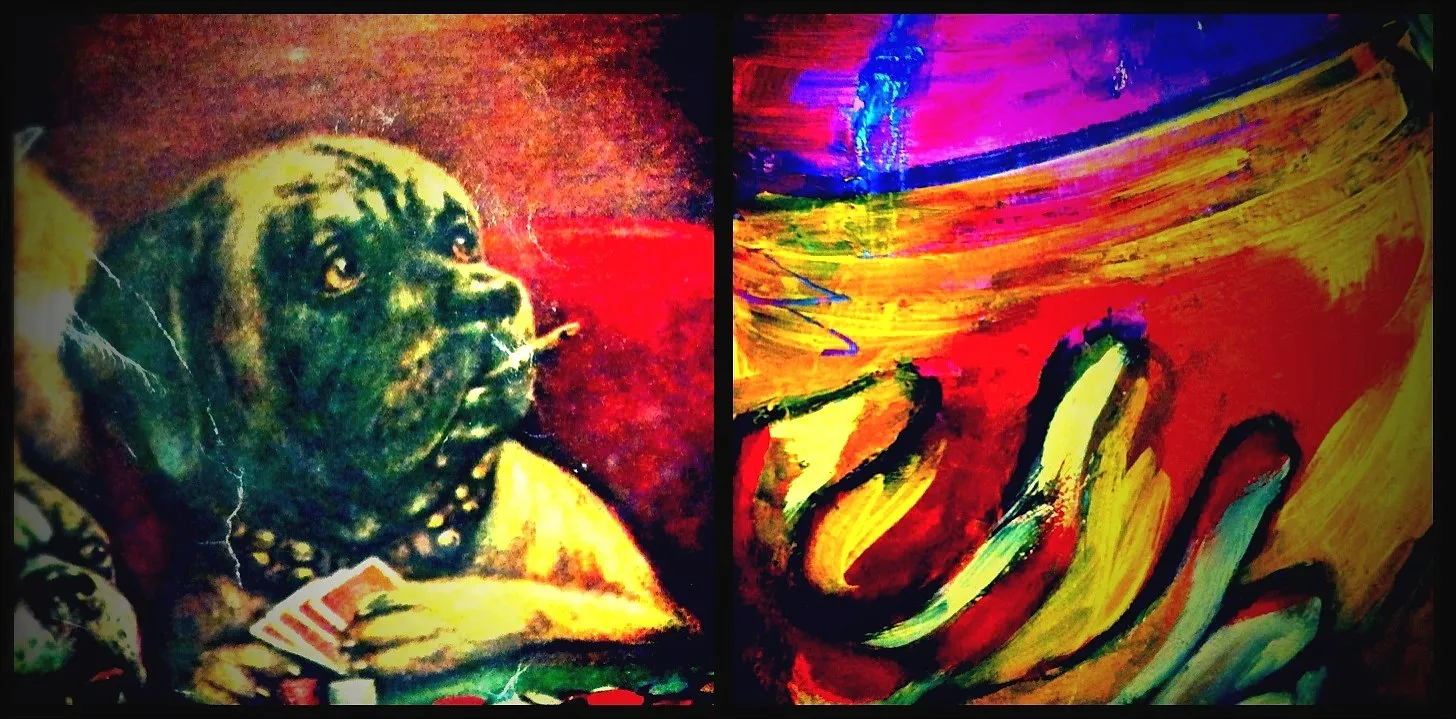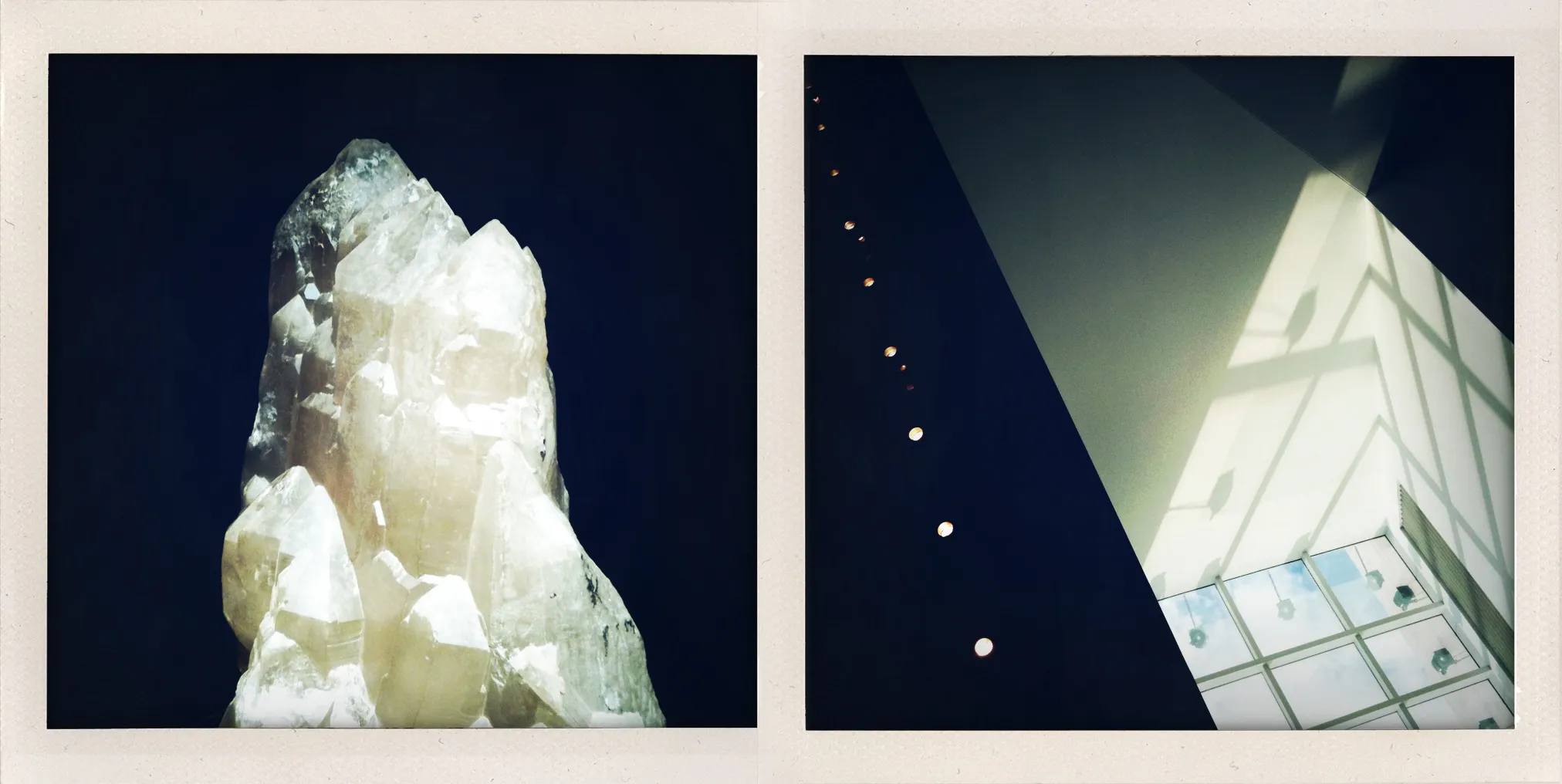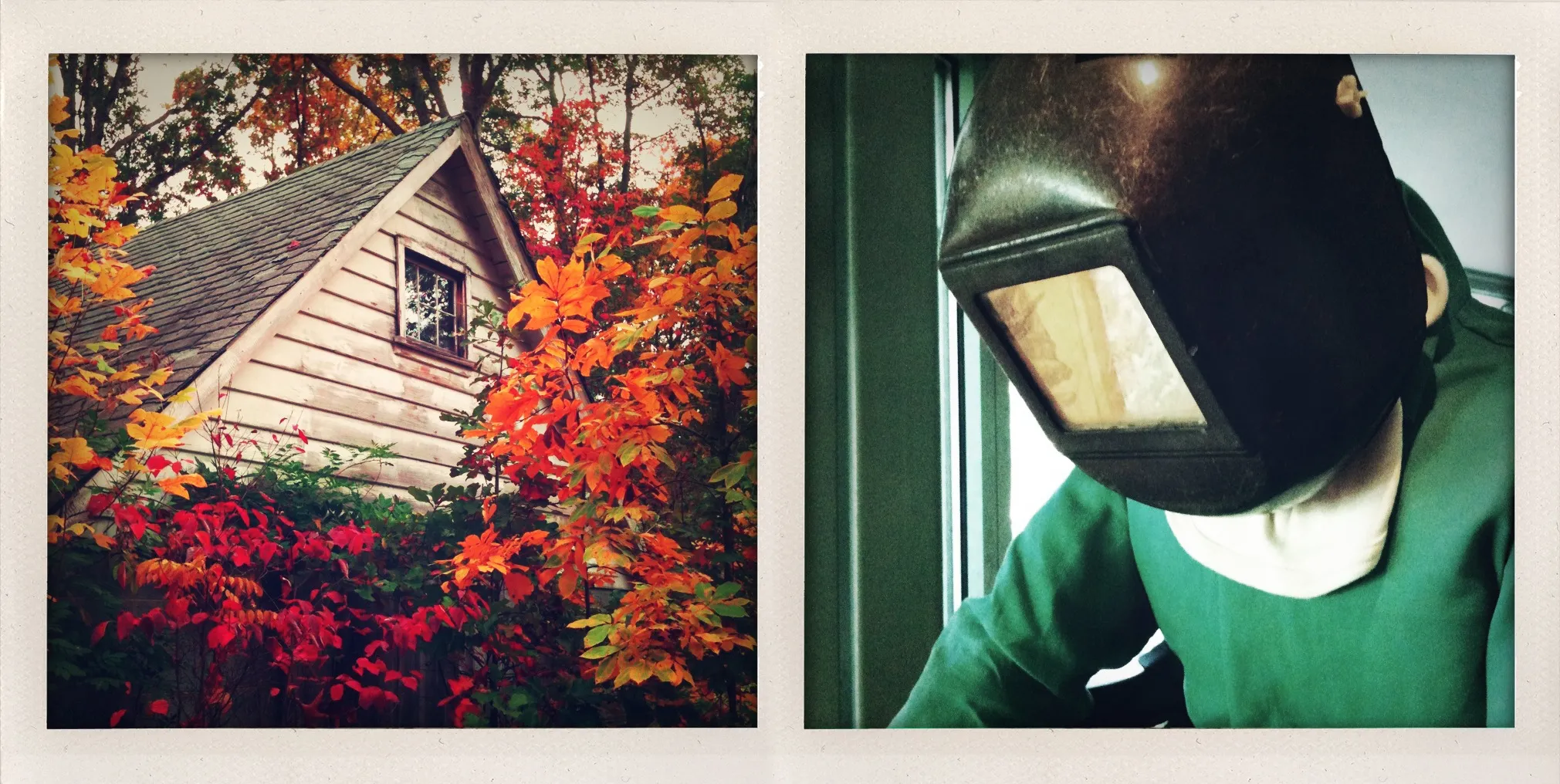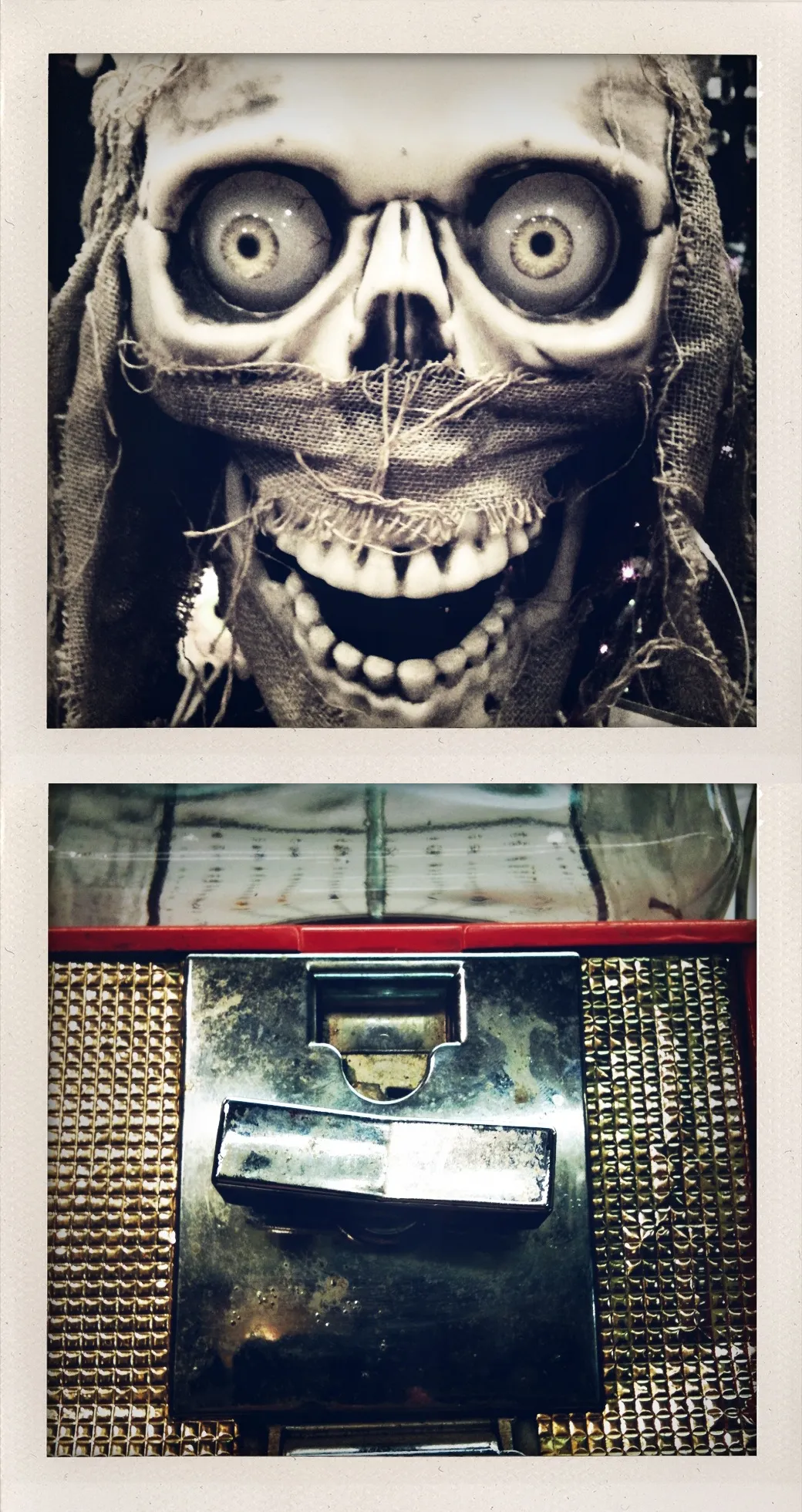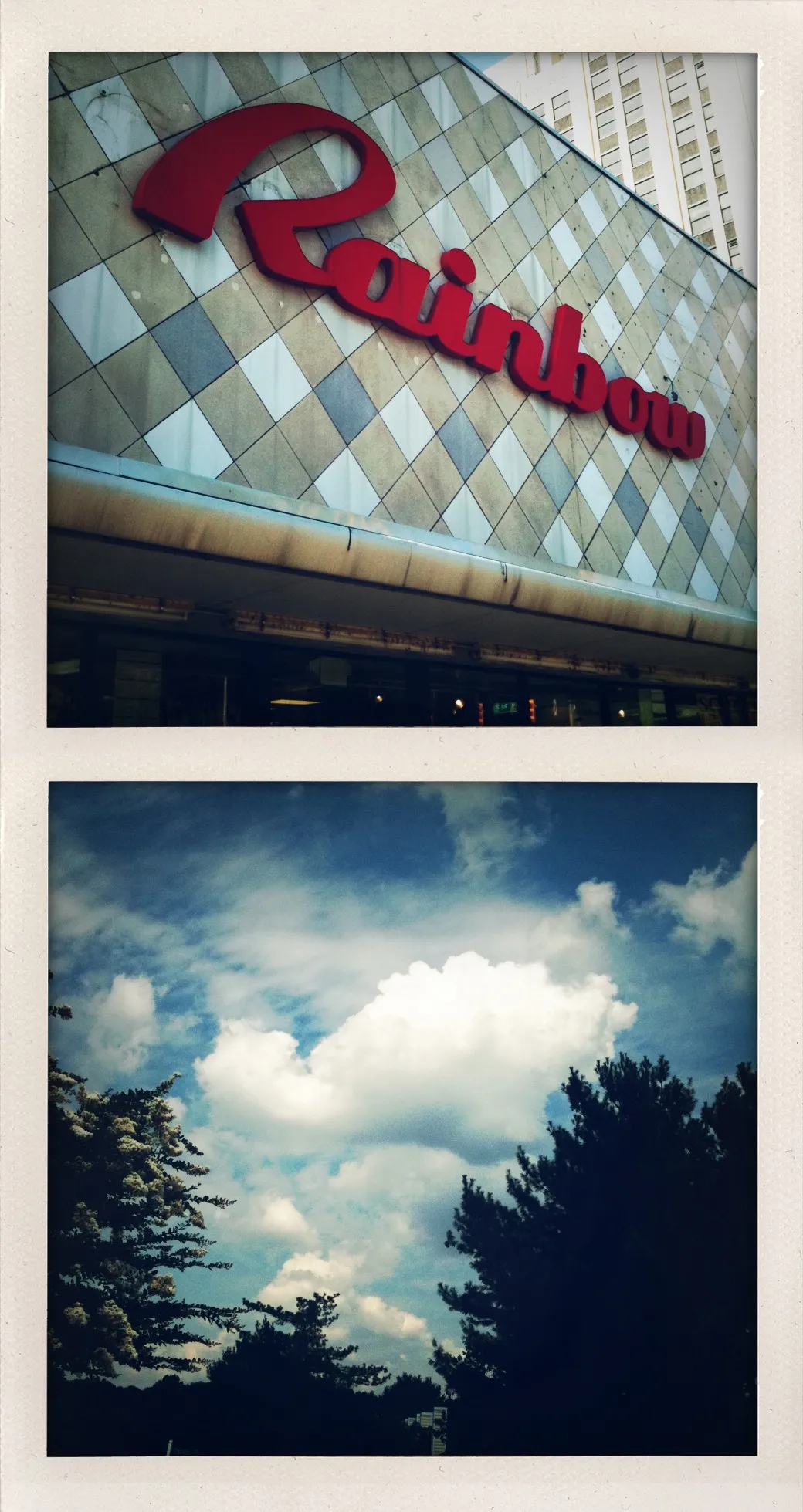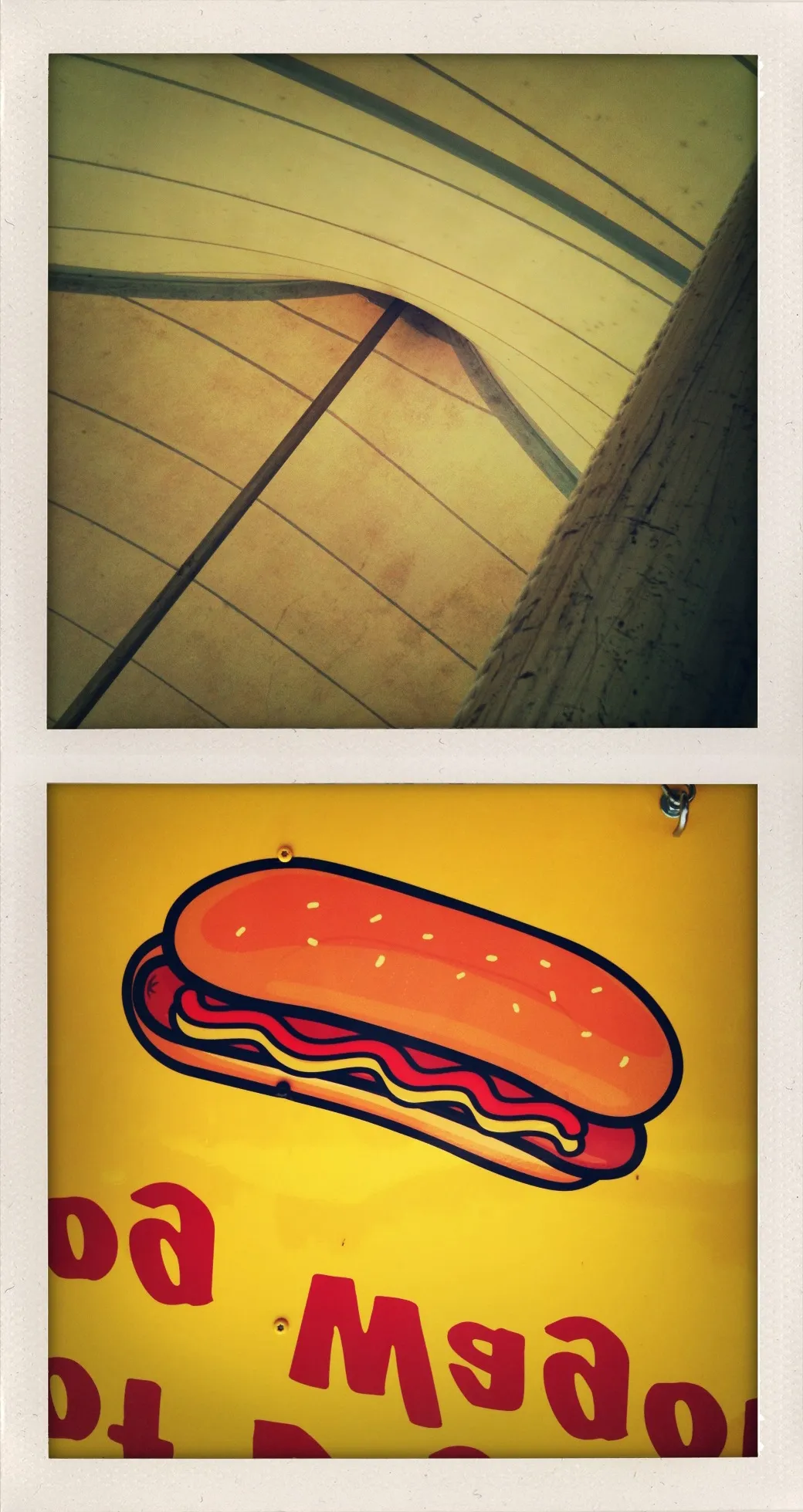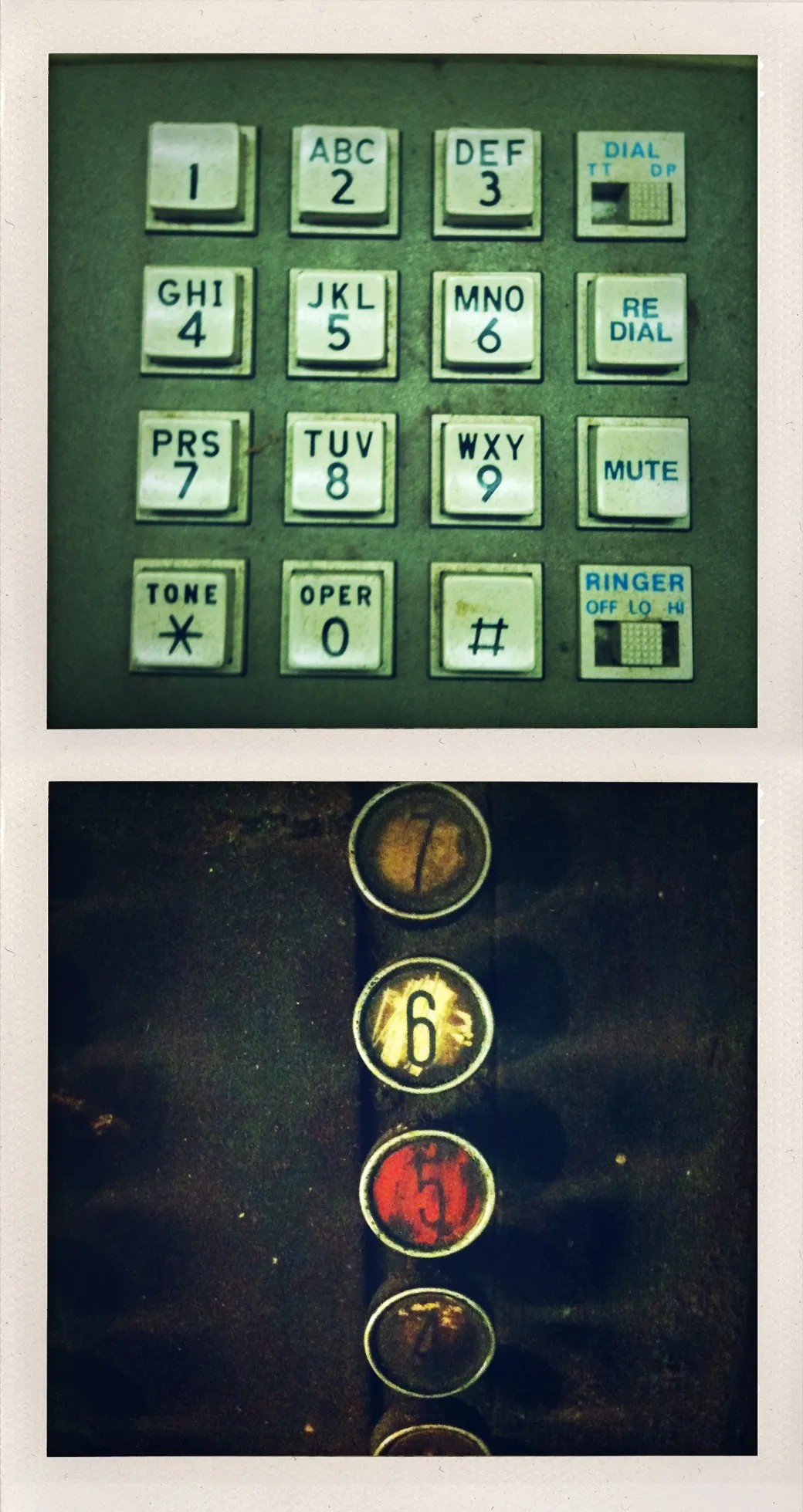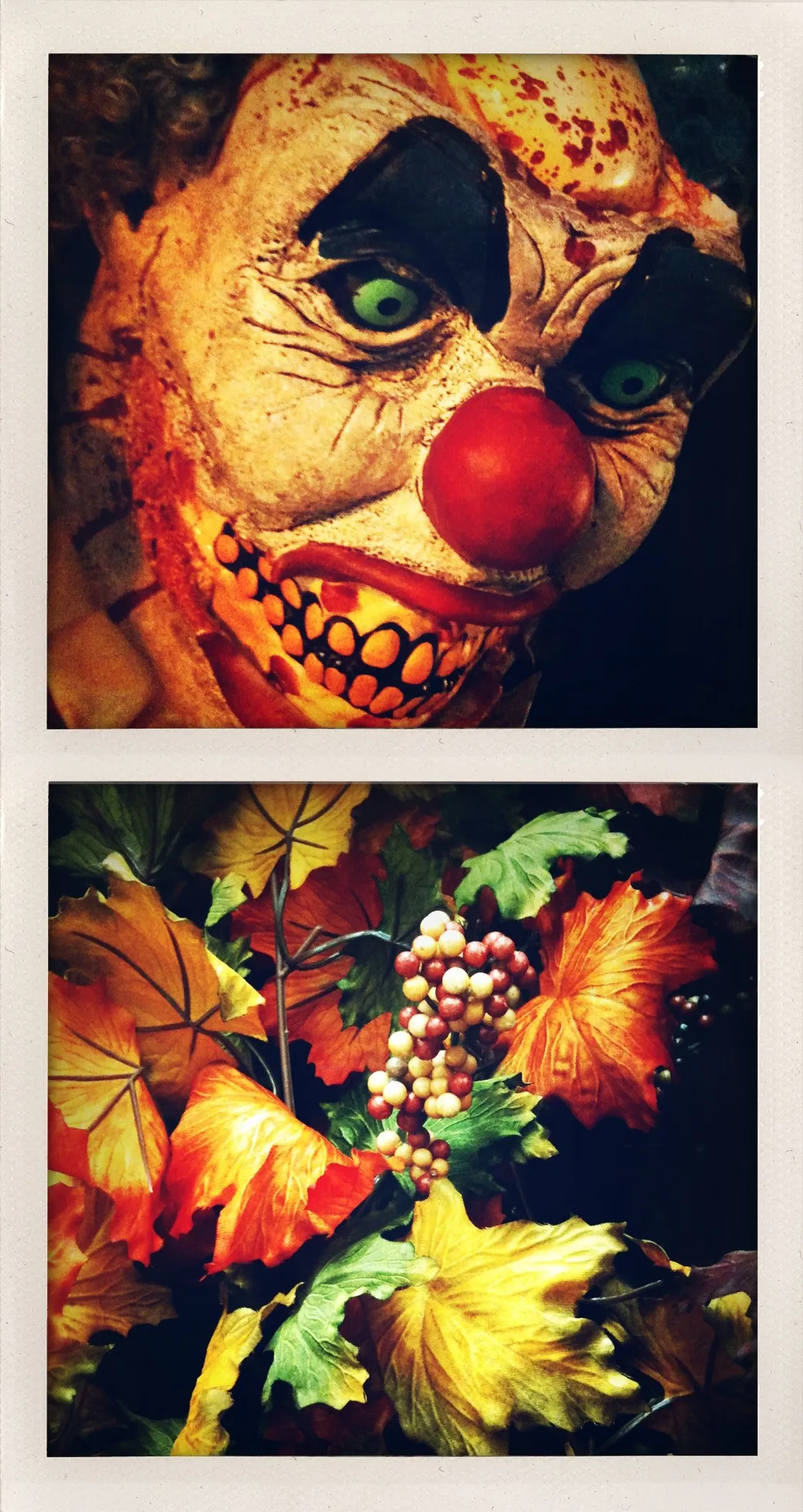Each work consists of two images photographed in institutional contexts: museum displays, commercial signage, public architecture, domestic artifacts. Individually, these subjects are unremarkable. Paired, they generate unexpected relationships—formal echoes, conceptual tensions, narrative suggestions. The diptych format encourages viewers to search for connections: cause and effect, metaphor, visual rhyme.
Titles guide interpretation without resolving ambiguity. Often puns or cultural references, they reframe what’s visible, adding layers of meaning while resisting singular readings. A fire hydrant and a dog become “Short Story.” Architectural elements transform into “Shark!” through pareidolia. Language steers perception but doesn’t dictate it.
The work explores our compulsion to construct narrative from fragments—to find coherence in juxtaposition, intention in accident. Like constellations mapped onto random stars, these pairings reveal as much about how we see as what we’re seeing.
The meaning exists not within individual frames, but in the gap between them, where viewers actively complete the story with incomplete information.
Dip|Tychs operates in the space between documentation and invention, where careful pairing transforms everyday subjects into conceptual encounters. The work treats photography not as passive recording but as active construction—using juxtaposition, title, and cultural reference to examine how we create meaning from fragments and project narrative onto proximity.
Essay written: May 2025
